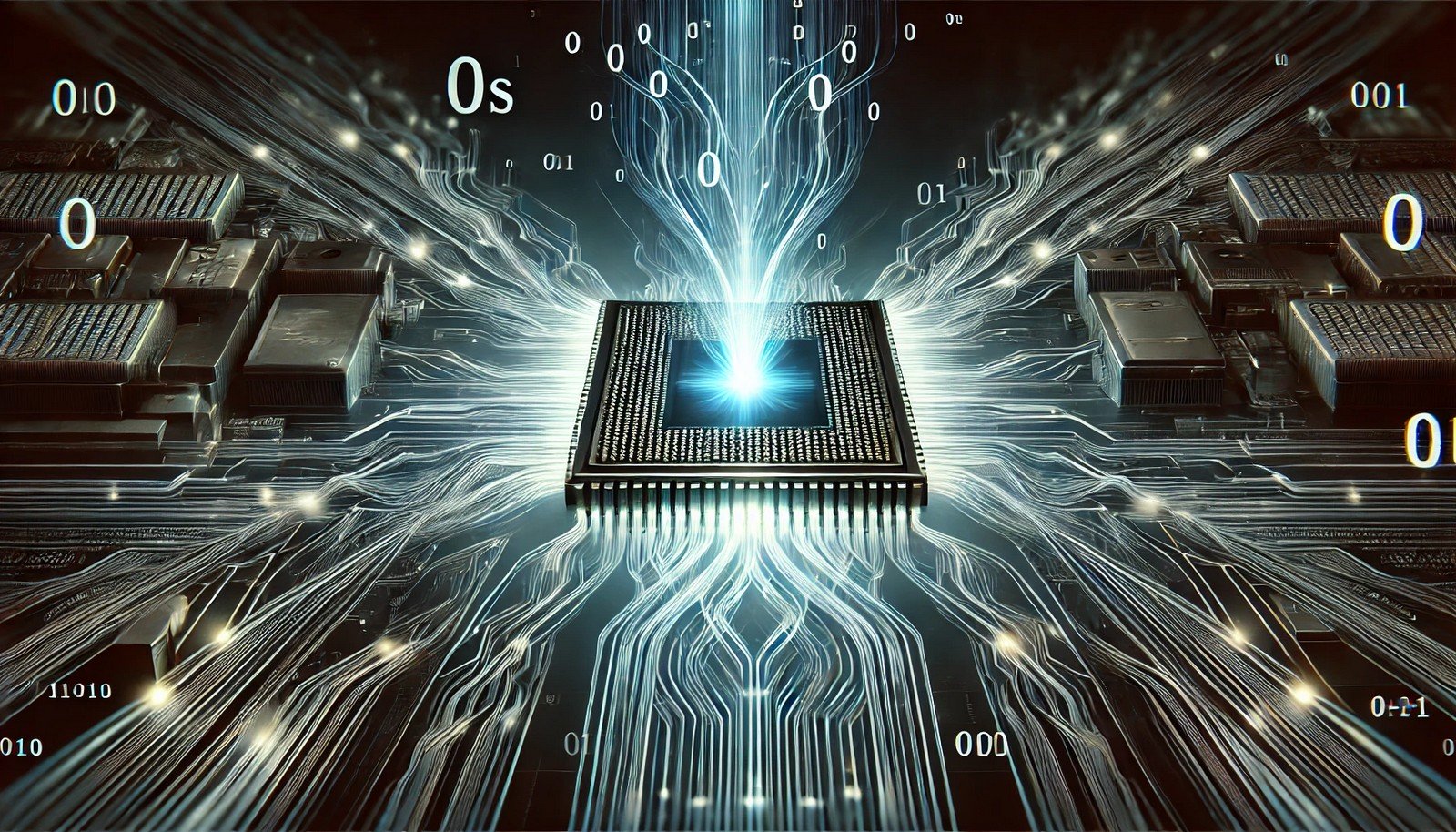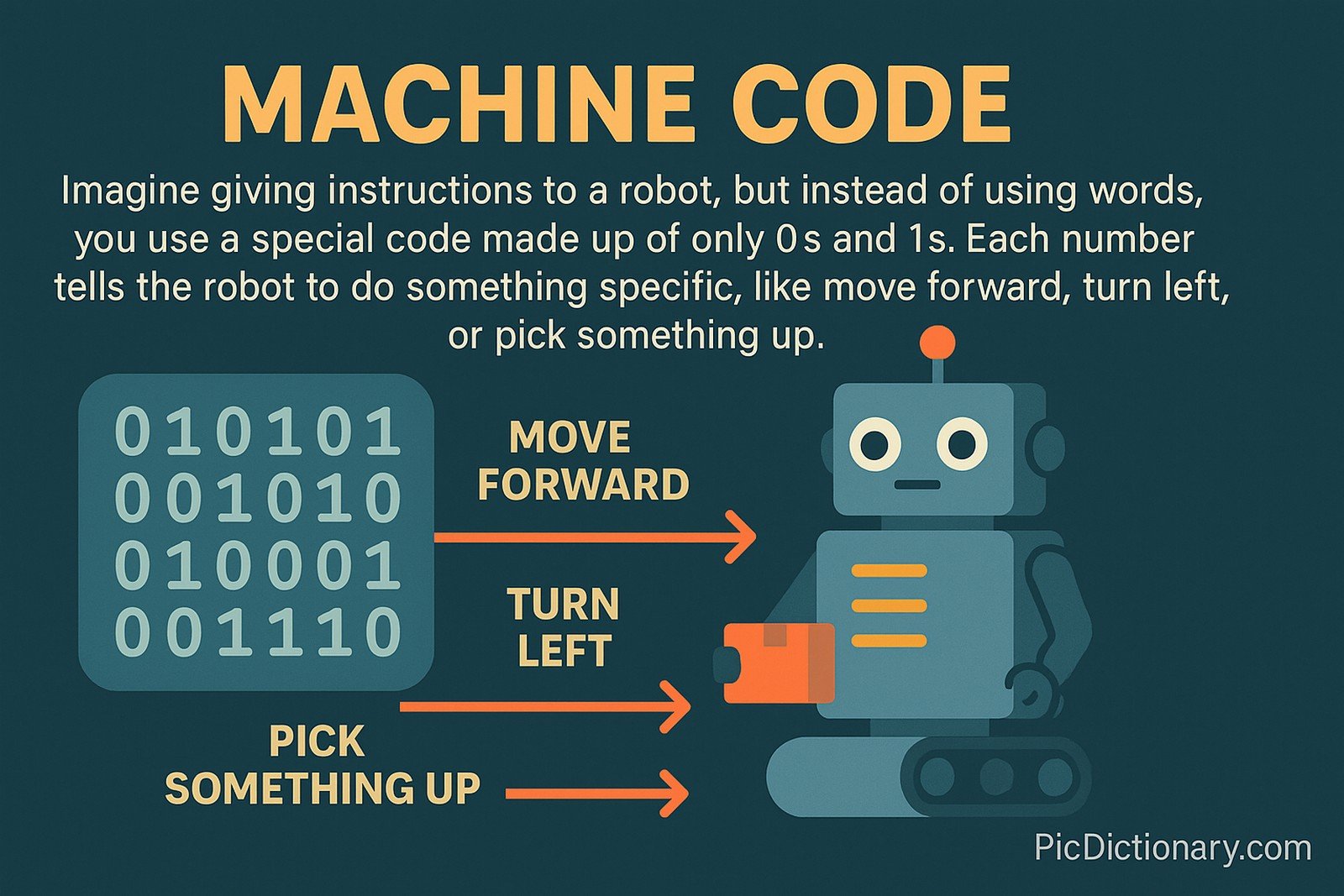Machine Code
 (Representational Image | Source: Dall-E)
(Representational Image | Source: Dall-E)
Quick Navigation:
- Machine Code Definition
- Machine Code Explained Easy
- Machine Code Origin
- Machine Code Etymology
- Machine Code Usage Trends
- Machine Code Usage
- Machine Code Examples in Context
- Machine Code FAQ
- Machine Code Related Words
Machine Code Definition
Machine code is the lowest-level programming language understood directly by a computer’s central processing unit (CPU). It consists of binary digits (0s and 1s) that represent specific instructions for the processor. Unlike high-level programming languages, which require translation through compilers or interpreters, machine code executes instructions directly, making it the most efficient form of software execution. Each CPU architecture has its unique set of machine code instructions, known as its instruction set architecture (ISA).
Machine Code Explained Easy
Imagine giving instructions to a robot, but instead of using words, you use a special code made up of only 0s and 1s. Each number tells the robot to do something specific, like move forward, turn left, or pick something up. That’s how computers understand machine code—it’s their language, and they follow it exactly without needing translation.
Machine Code Origin
The concept of machine code dates back to the earliest days of computing, in the 1940s and 1950s, when computers such as the ENIAC and UNIVAC were programmed using direct binary input. Early programmers had to manually enter machine instructions using punch cards or switches, as there were no high-level programming languages at the time.
Machine Code Etymology
The term "machine code" originates from its function—it is the code that a machine (computer) can understand and execute directly. The word "code" reflects the encoded nature of the instructions.
Machine Code Usage Trends
Machine code remains fundamental to computing but is rarely written by hand today. Instead, programmers use assembly language or high-level languages like C or Python, which are translated into machine code by compilers. However, machine code is still crucial in embedded systems, operating system kernels, and performance-critical applications.
Machine Code Usage
- Formal/Technical Tagging:
- Low-level programming
- CPU architecture
- Instruction set
- Binary execution - Typical Collocations:
- "machine code instruction"
- "compiled to machine code"
- "binary machine code"
- "machine code execution"
Machine Code Examples in Context
- A programmer writes C code, and a compiler translates it into machine code that the CPU executes.
- The BIOS of a computer is written in machine code to ensure the system can boot before loading an operating system.
- Malware analysts examine machine code to understand and detect viruses or exploits.
Machine Code FAQ
- What is machine code?
Machine code is the binary-encoded instructions that a computer's CPU executes directly. - Why is machine code important?
It is the most fundamental level of computer programming, enabling direct hardware communication. - How is machine code different from assembly language?
Assembly language is a human-readable representation of machine code, using mnemonics instead of binary numbers. - Can humans write machine code?
Yes, but it is extremely difficult and error-prone, which is why higher-level languages are preferred. - Does every computer use the same machine code?
No, each CPU architecture has its unique instruction set. - How does software get converted into machine code?
Compilers and assemblers translate high-level programming languages into machine code. - What are some examples of machine code instructions?
Instructions like "LOAD", "ADD", and "STORE" get translated into binary sequences specific to a CPU. - Is machine code still used today?
Yes, it is essential in system programming, embedded systems, and firmware development. - Why is machine code in binary?
Computers use binary (0s and 1s) because their fundamental circuits operate using electrical states (on/off). - Can machine code be modified?
Yes, but modifying raw machine code requires expertise and is generally done using disassemblers or hex editors.

Machine Code Related Words
- Categories/Topics:
- Computer Architecture
- Low-Level Programming
- Binary Execution
Did you know?
The first computer virus, "Brain" (1986), was written in machine code for IBM-compatible PCs. It spread by modifying boot sectors, demonstrating how powerful and fundamental machine code is in computing history.
PicDictionary.com is an online dictionary in pictures. If you have questions or suggestions, please reach out to us on WhatsApp or Twitter.Authors | Arjun Vishnu | @ArjunAndVishnu

I am Vishnu. I like AI, Linux, Single Board Computers, and Cloud Computing. I create the web & video content, and I also write for popular websites.
My younger brother, Arjun handles image & video editing. Together, we run a YouTube Channel that's focused on reviewing gadgets and explaining technology.



Comments powered by CComment